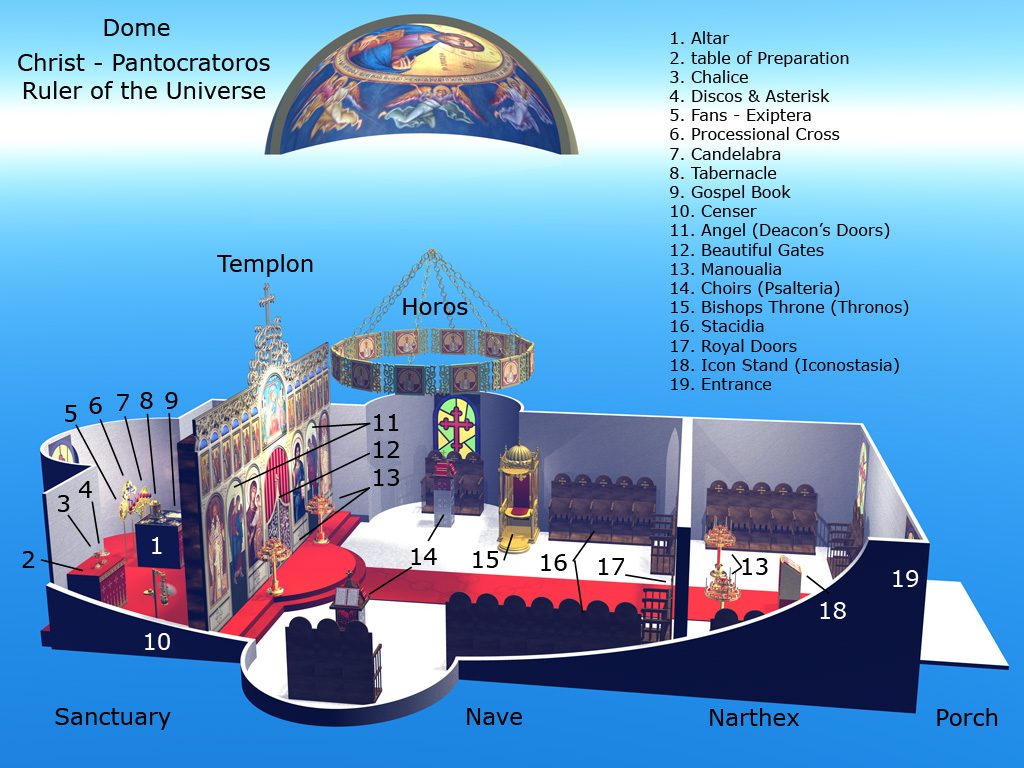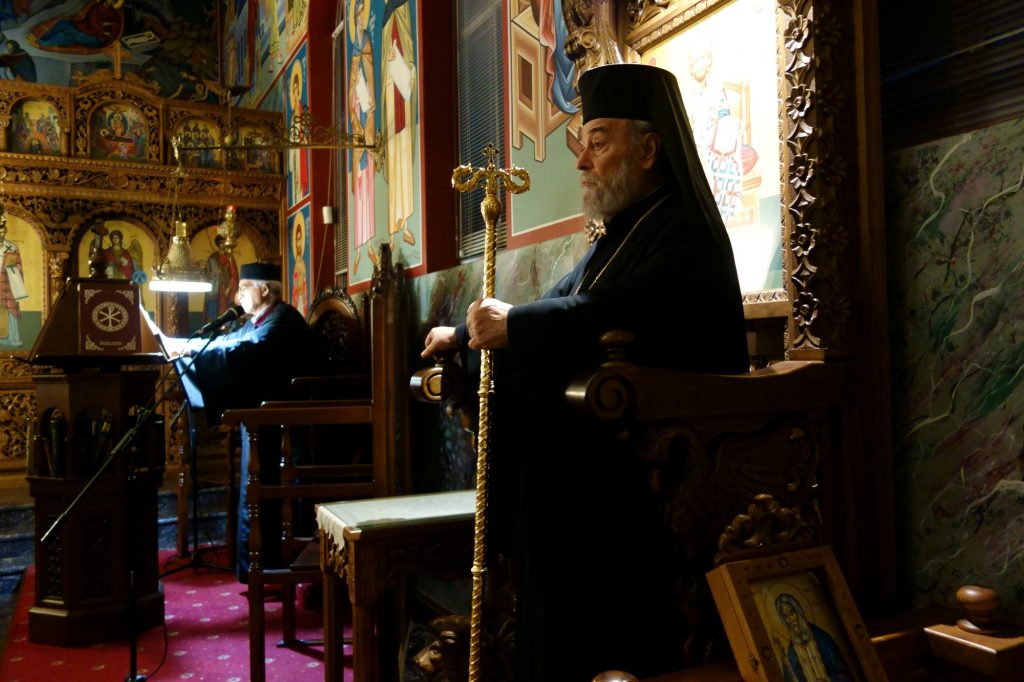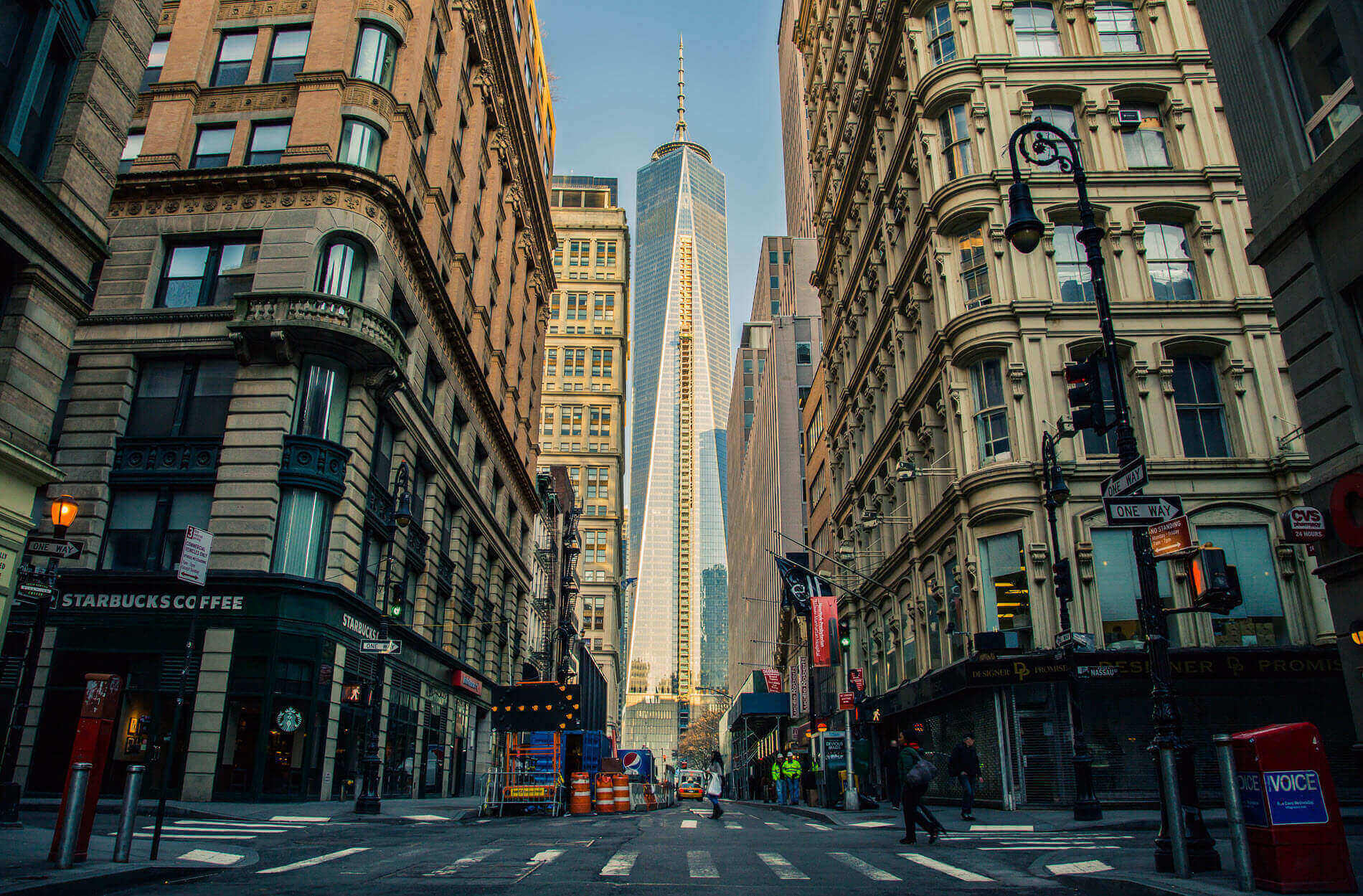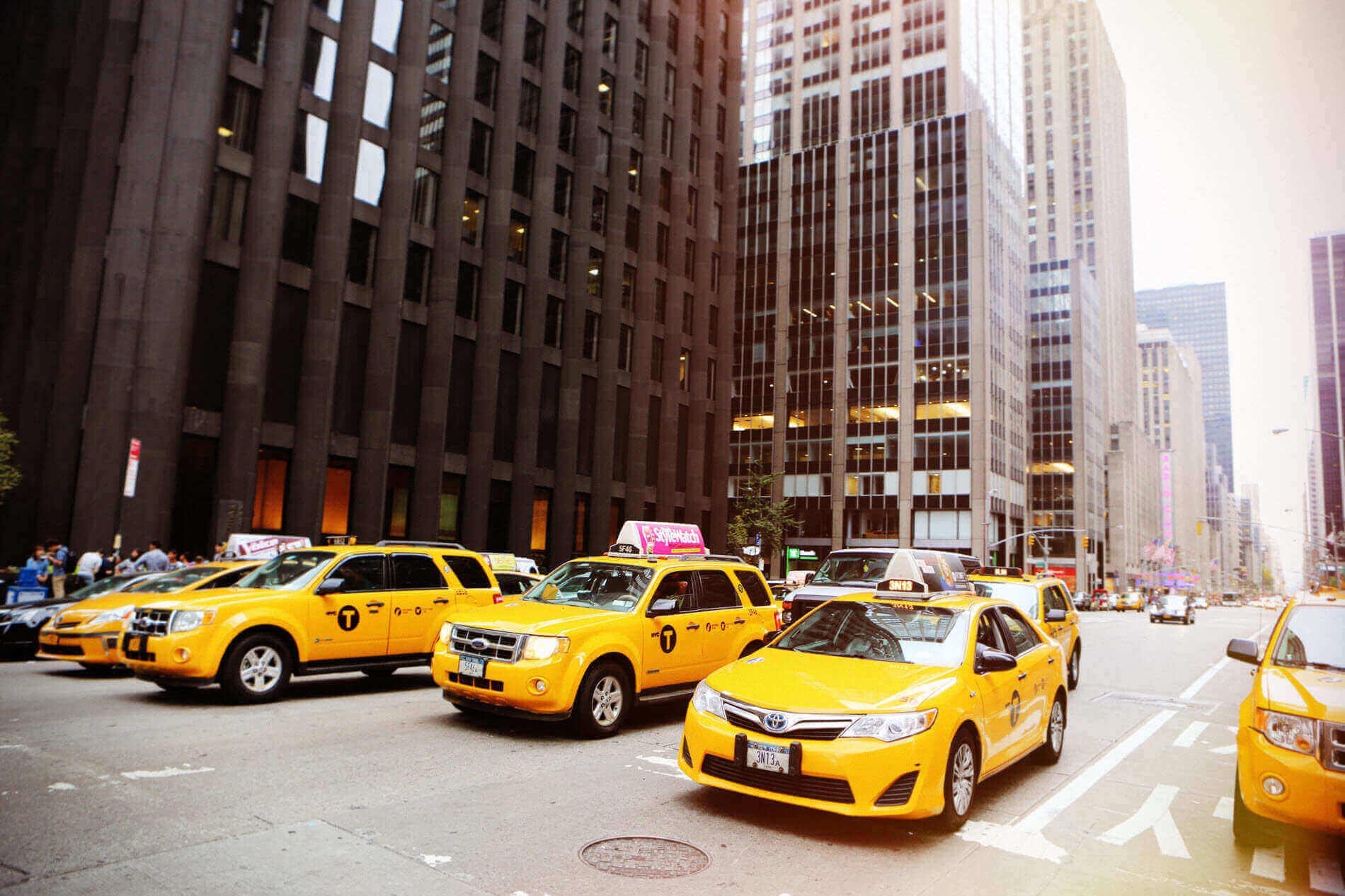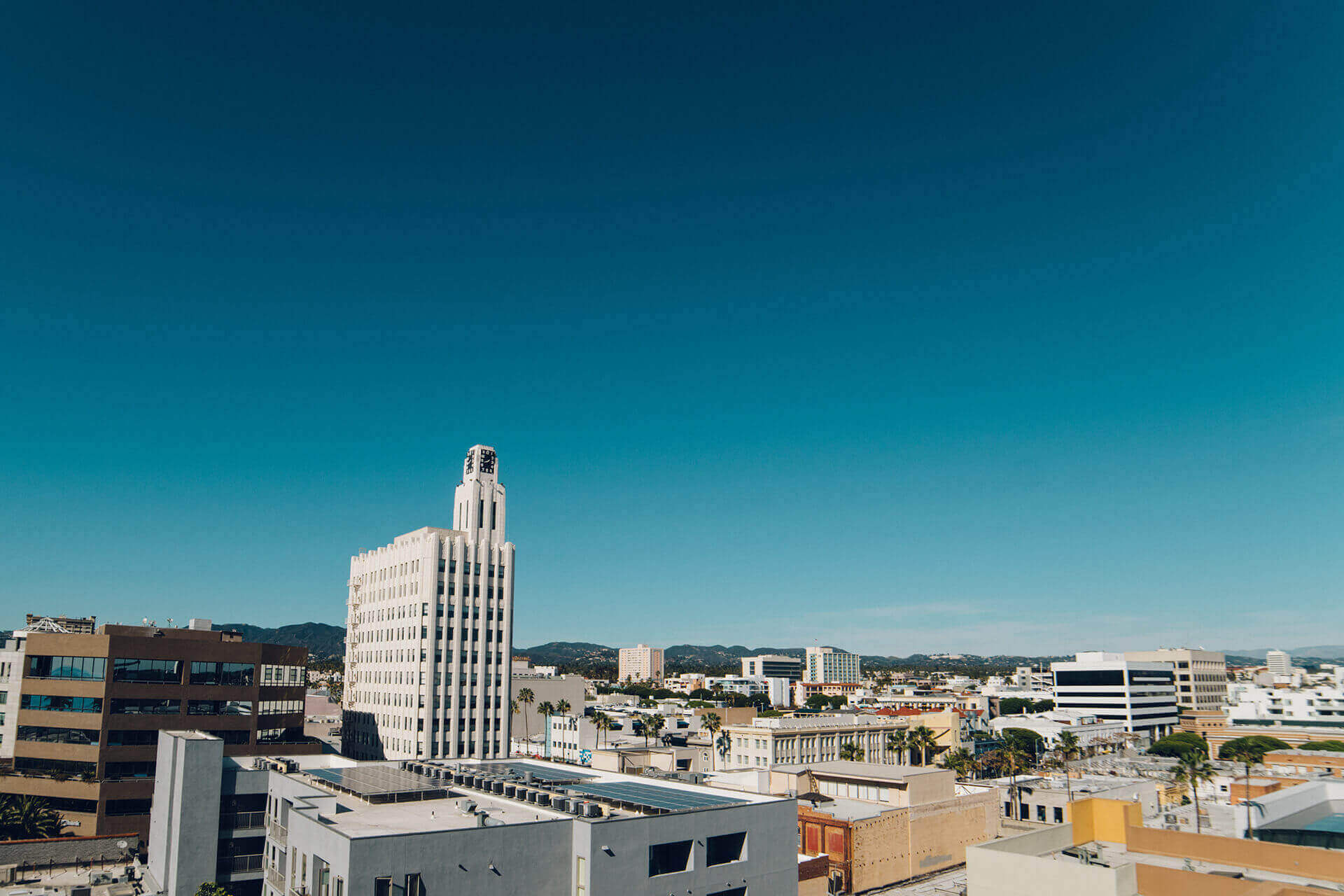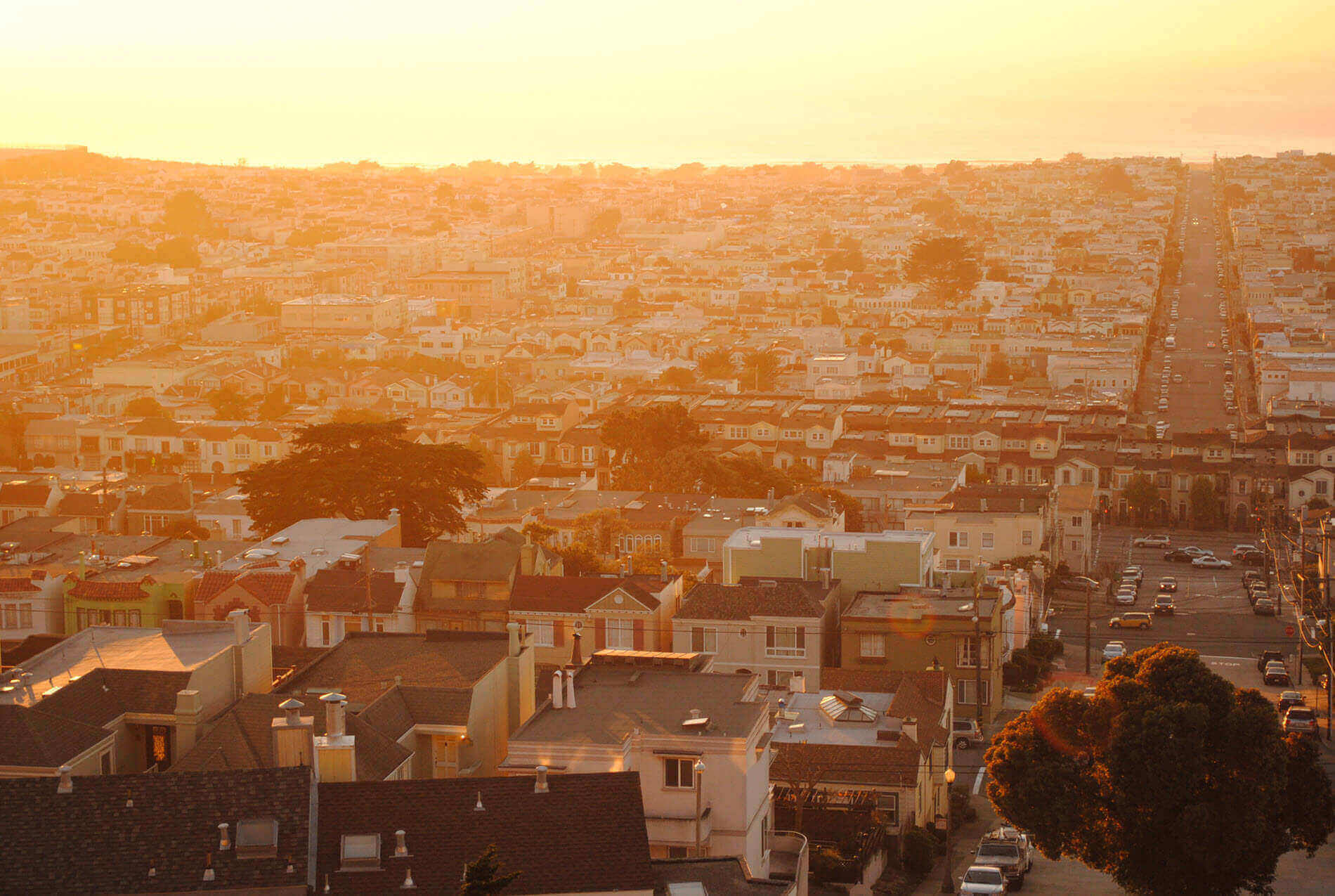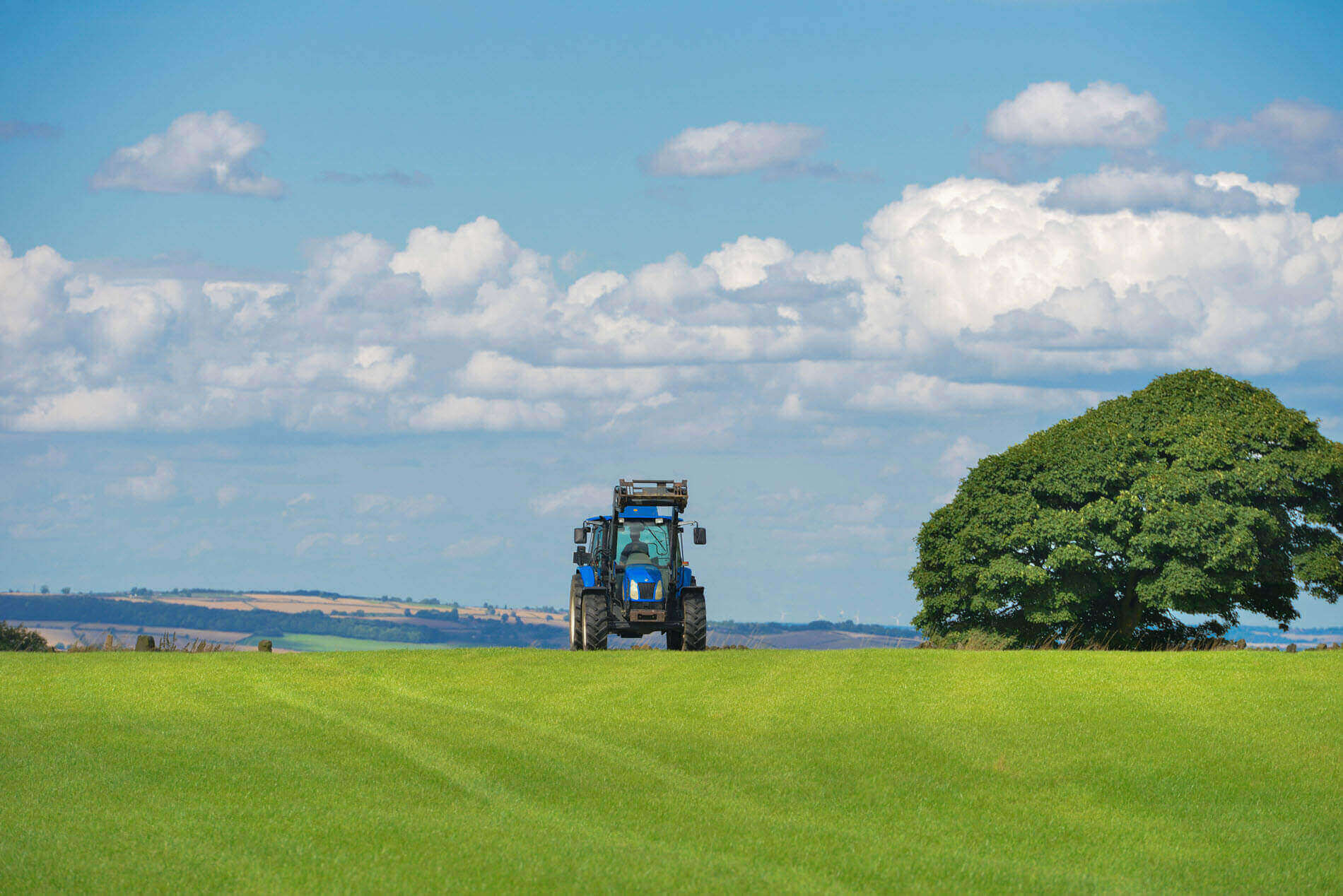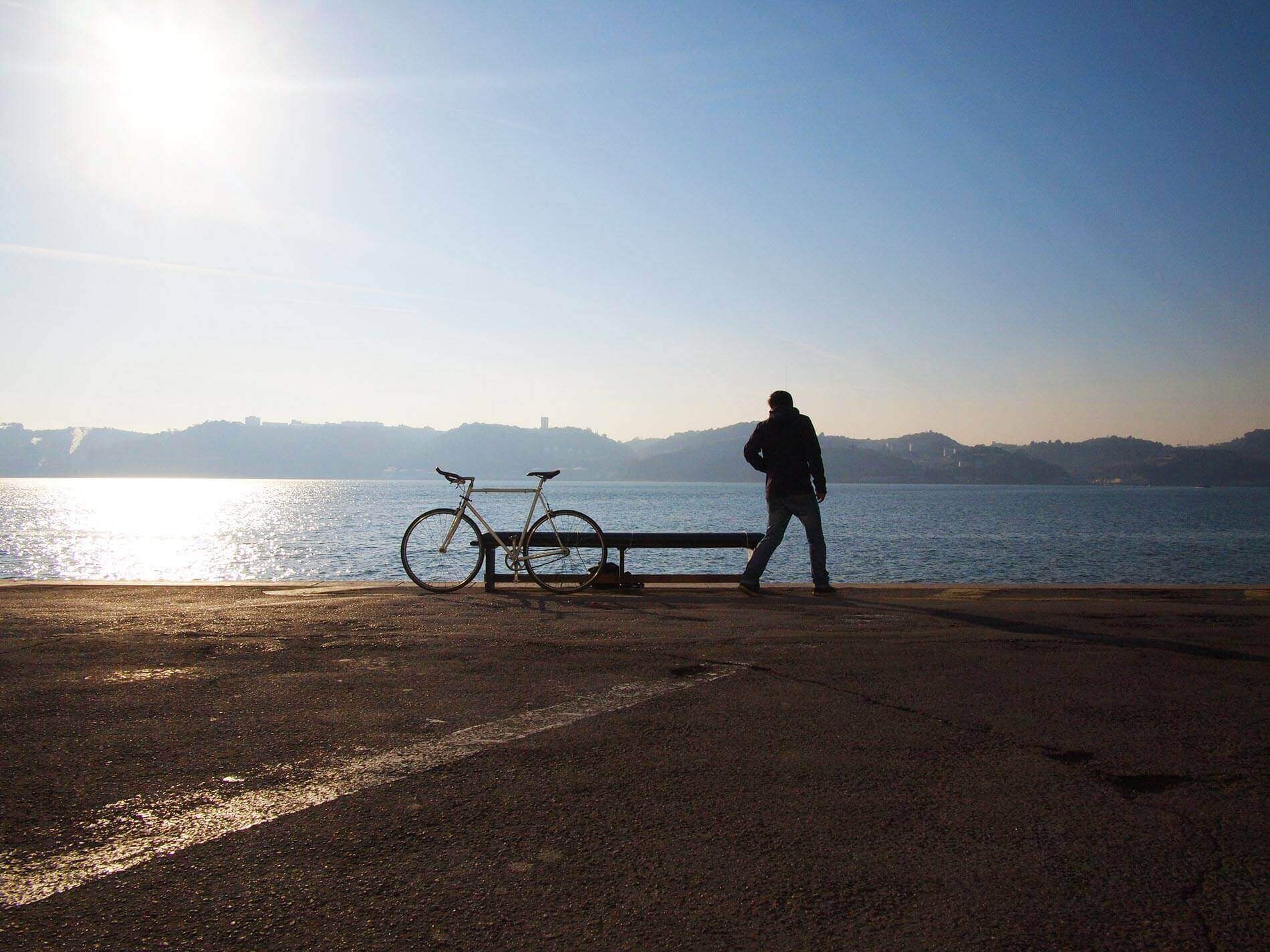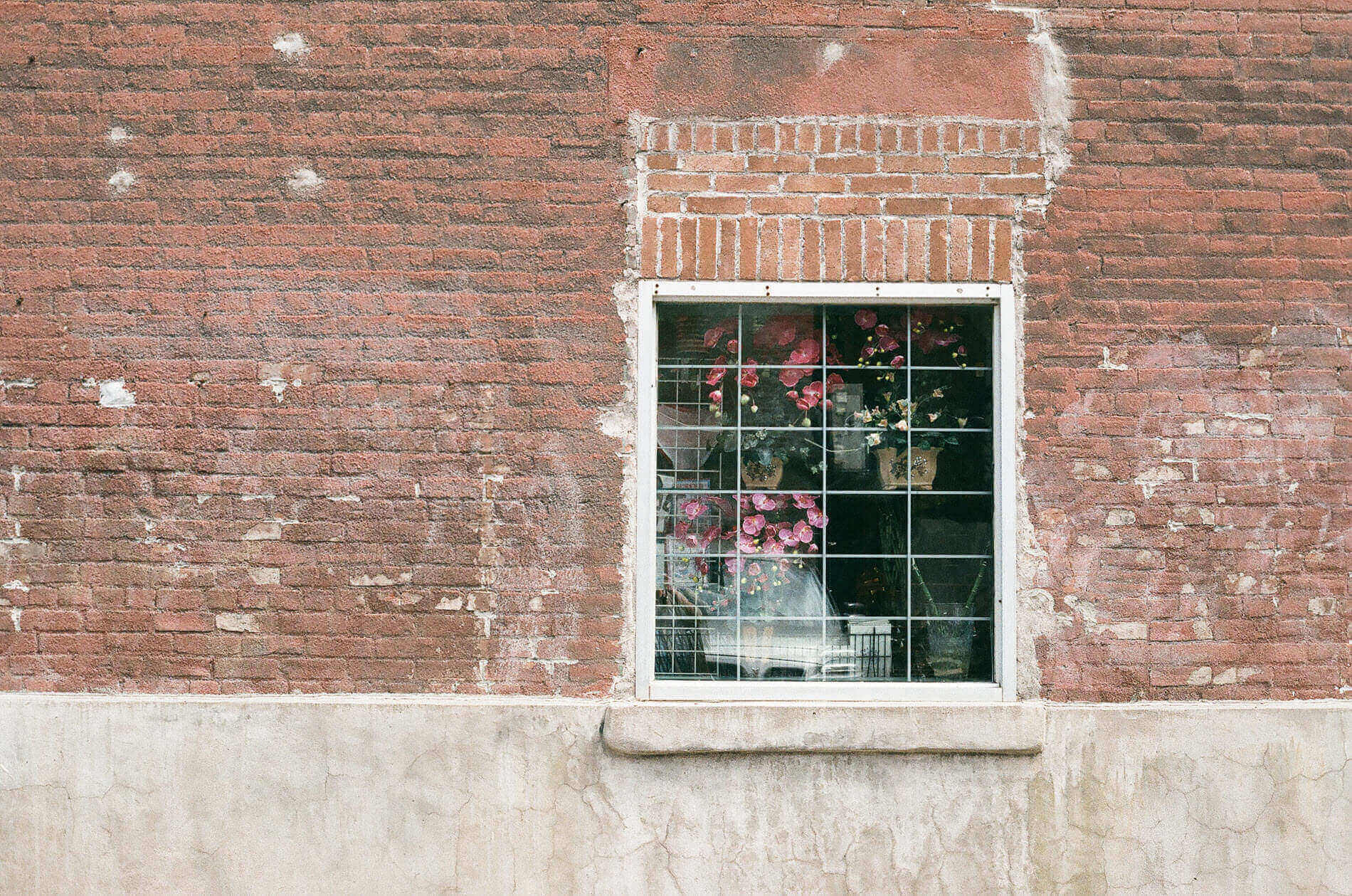When you first enter the Church, you notice many icons, the smell of incense, chanting and people partaking in the service.
The icons at the entrance to the Church remind Orthodox Christians that Christ and the saints are invisibly present in this Holy Place, the sacred space of the Church. The first thing they do upon entering this Holy Place is to make the sign of the Cross and pay reverence.
Narthex
The interior of an Orthodox Church is divided into three parts. The first is the Narthex. In ancient times it was a large, spacious place, where the Catechumens received instruction while preparing for Baptism, and also where Penitents who were excluded from Holy Communion stood. So, the Narthex of the Church represents this world in which mankind is called to repentance.
Nave
The main body of the Church is the Nave, separated from the Sanctuary (Holy Place) by an icon screen with doors, called the iconostasis or templo (icon partition).
It is common that the walls of the Nave are decorated with icons and murals, and the icons of the iconostasis have lit oil lamps suspended alongside them.
The Nave is the place of the assembled Church, which includes the living and the departed, together alive in Christ, the One Body of Christ, the faithful people of God.
Soleo
Within the Nave and just before the iconostasis is the Soleo. This area is raised, clearly differentiating it from the main area of the Church.
It is in the Soleo that most of the Sacraments of the Church are conducted, such as Baptism, Marriage and Holy Unction, but also special services, such as the Blessing of the Waters, the Blessing of the loaves, and Memorial Services.
Sanctuary
The Sanctuary, which lies beyond the iconostasis, is set aside for those who have a special function within the Divine services, and normally, persons not consecrated to the service of the Church are not permitted to enter.
Occupying the central place in the Sanctuary is the Holy Altar, which represents the Throne of God, with the Lord Himself invisibly present there. The Holy Altar is the point of meeting and union with God in His Kingdom.
The eternal worship of God takes place ‘at all times and in every hour’. The Orthodox Church is that place between Heaven and Earth.
Iconostasis
The iconostasis or templo separates the Nave from the Sanctuary, just as the veil in the Old Testament Tabernacle and Temple. But, this veil is no longer permanently closed; it has been opened by Christ Himself.
On the iconostasis are placed icons of Christ, Mary and various other Saints. All these are a visible representation of an invisible reality. They reveal the presence of Christ and of His Saints gathered around His Throne.
The second row of icons on some icon screens depicts the major events in the life of our Lord from the Annunciation to His Ascension. This serves as the Gospel in pictures, revealed to the assembled faithful.
Icons are much more than just beautiful art or visual aids. Icons are windows through which the faithful see into the world beyond time and space. Just as Christ manifested and communicated God to us in His material body, so the Church today continues to use material things (wood, paint, etc.) to make God known to mankind.
An Orthodox icon depicts the transfiguration of the human body. It represents the saint’s body transformed, transfigured by Grace in the Kingdom of God.
The Saints represented in icons look straight into the eyes of their beholders, as if to say, “Here I am. I am very much alive in the presence of God.”
During the services of the Orthodox Church, the deacon or priest censes first the icons and then the entire congregation. In so doing, the Church honours not only the angels, saints and martyrs, but also the living icon (image) of God, which every faithful Christians bears.
Tabernacle
The Tabernacle is kept on the centre of the Holy Altar. In the Old Testament, the tablets on which God had written the Ten Commandments were kept in the Tabernacle. In the New Testament, it is the Lord Jesus Christ Himself who dwells here. His precious Body and Blood are ever kept in the Tabernacle. The Church, then, is truly the house of God.
God is ever present here in a very real way. This is why the Orthodox Christian makes the sign of the cross whenever he passes before the Holy Altar.
The eternal light is the votive light that is suspended above the Tabernacle or burns before it on the altar table. It burns constantly to denote that the Lord Jesus Christ, who is the “Light of the World,” is truly present.
The Table of Preparation is a small table to the left of the Holy Altar behind the iconostasis. Here, the people’s gifts of bread and wine are prepared before the Divine Liturgy and later carried to the Holy Altar during the Great Entrance.
An icon of the Nativity is usually found at the Table of Preparation to signify that just as Jesus was born in Bethlehem, so through the Holy Eucharist He comes to be born and dwell in our lives today.
Bishop’s Throne
The Bishop’s throne is found in different places in the various traditions, but it is always set apart for the bishop who is considered to be the head of the Church and represents Jesus Christ.
For this reason, an icon of Christ enthroned is usually found there. The bishop occupies the throne during the Liturgy when he is not actually serving.
A Final Word
Finally, remember that the Orthodox Church is a Holy Place. One meaning of the word “holy” is “set apart.” In the case of our Church, it is set apart for God.
There is a holy tradition in the way in which people enter the Church. These traditions are not so much bans or prohibitions but rather safeguards of that holiness, that being “set apart.” Everything in the Orthodox Church is done with a blessing.
So, sometimes a priest may give someone a particular blessing to do something that might not otherwise be generally allowed.
These departures from normal practise are extraordinary and should never be taken for granted. In every situation it is proper to ask a blessing.
Therefore, some of the restrictions placed on us regarding entering or touching things in the Church are not ‘bans’ but as not having been given a blessing (permission) to do so.

